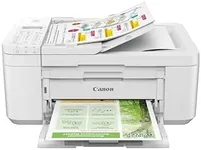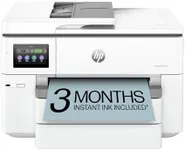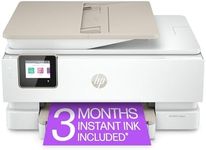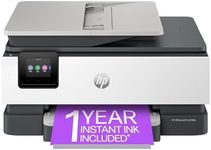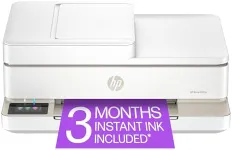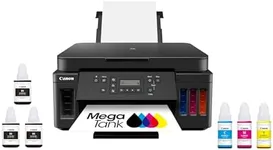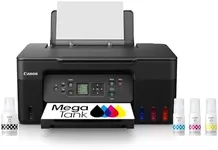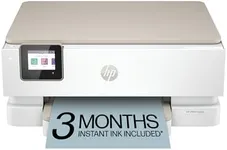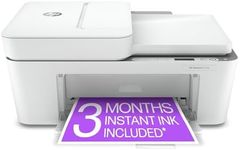Buying Guide for the Best Multifunction Inkjet Printers
Choosing the right multifunction inkjet printer can be a bit overwhelming given the variety of models and features available. However, by understanding your specific needs and the key specifications of these printers, you can make an informed decision. Multifunction inkjet printers are versatile devices that combine printing, scanning, copying, and sometimes faxing capabilities into one machine. They are ideal for home offices, small businesses, and even personal use. Here are the key specifications you should consider when selecting a multifunction inkjet printer.Print Quality (Resolution)Print quality is measured in dots per inch (DPI). This spec indicates how many dots of ink the printer can place on a square inch of paper. Higher DPI means better print quality, which is important for printing detailed images and professional documents. For general home use, a resolution of 600 x 600 DPI is usually sufficient. For high-quality photo printing, look for a printer with at least 1200 x 1200 DPI or higher. Consider your primary use: if you need to print high-resolution photos or detailed graphics, opt for a higher DPI.
Print SpeedPrint speed is measured in pages per minute (PPM). This spec tells you how quickly the printer can produce pages. Faster print speeds are important for high-volume printing tasks, such as in a busy office environment. For occasional home use, a speed of 10-20 PPM is generally adequate. For more demanding environments, look for printers with speeds of 20 PPM or higher. Assess how often and how much you print to determine the right speed for your needs.
Connectivity OptionsConnectivity options determine how you can connect your printer to your devices. Common options include USB, Wi-Fi, Ethernet, and Bluetooth. Wi-Fi connectivity allows for wireless printing from multiple devices, which is convenient for home and office use. Ethernet is useful for wired network connections in office settings. USB is a standard option for direct connections to a single computer. Bluetooth is handy for printing from mobile devices. Consider your setup and how you prefer to connect your devices to choose the right connectivity options.
Paper HandlingPaper handling refers to the types and sizes of paper the printer can accommodate, as well as the capacity of the paper tray. This is important if you need to print on different media types, such as envelopes, labels, or photo paper. A larger paper tray capacity is beneficial for high-volume printing, reducing the need for frequent refills. For general use, a tray that holds 100-250 sheets is usually sufficient. If you print a lot or use various paper types, look for a printer with multiple trays and higher capacity.
Ink Cost and YieldInk cost and yield refer to the price of replacement ink cartridges and how many pages they can print. This is crucial for understanding the long-term cost of owning the printer. High-yield cartridges print more pages and can be more cost-effective in the long run. Check the cost of the cartridges and the estimated page yield to calculate the cost per page. If you print frequently, look for printers with affordable high-yield cartridges to keep your printing costs down.
Scanner ResolutionScanner resolution, like print quality, is measured in DPI. This spec indicates the level of detail the scanner can capture. Higher resolution is important for scanning detailed images or documents that need to be enlarged. For general document scanning, a resolution of 600 x 1200 DPI is usually sufficient. For high-quality image scanning, look for a scanner with at least 1200 x 2400 DPI. Consider what you will be scanning most often to determine the appropriate resolution.
Automatic Document Feeder (ADF)An Automatic Document Feeder (ADF) allows you to scan, copy, or fax multiple pages without manually feeding each one. This is a valuable feature for handling multi-page documents efficiently. ADF capacity varies, with some holding 20 pages and others up to 50 or more. If you frequently work with multi-page documents, an ADF can save you a lot of time and effort. Choose a printer with an ADF that matches the volume of your typical tasks.
Duplex PrintingDuplex printing refers to the printer's ability to print on both sides of a sheet of paper automatically. This feature is important for saving paper and creating professional-looking double-sided documents. It is especially useful for businesses and home offices that print a lot of reports or booklets. If you need to print double-sided documents regularly, look for a printer with automatic duplex printing. For occasional use, manual duplex printing (where you flip the paper yourself) may be sufficient.
